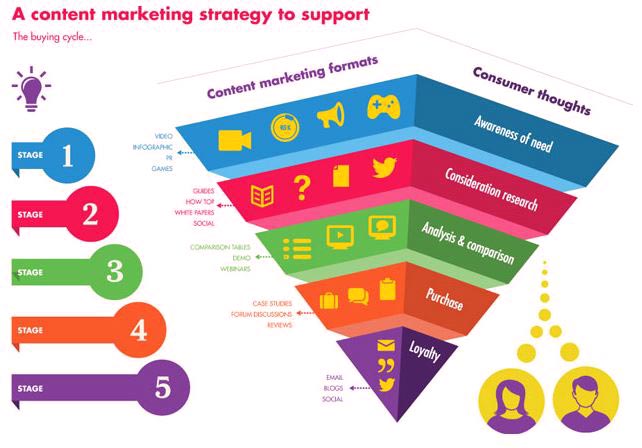
There are many email marketing statistics that you should know. These statistics include the average rate of click-through for your email, the effectiveness segmentation, as well as the impact of mobile optimizing. By following these tips, you can grow your business with ease. Keep reading to find out what these statistics are. Here are 20 essential statistics to help you market your email marketing business. Here's a breakdown. It's a must-read for any business owner.
20 Email Marketing Statistics Every Business Owner Should Know
A few statistics are key to the success of an email marketing campaign. First, you should know that 45% email users don't open emails from unknown sources. This statistic alone may be enough to make you reconsider sending your email campaigns to those people. Emails are used by almost every industry, but the average open rate is only 21%. Open rates for emails sent by government organizations or religious groups are the highest (28.7%). The average email recipient checks their email at least twice daily.
Email marketing has become the king of marketing strategies. Its ROI is 4400%, which means that for every $1 you spend, you can expect to see a return of $44. That's just the beginning. Email marketing is a great way to increase brand awareness and generate quality leads. However, the benefits go far beyond ROI. These 20 email marketing statistics should be a part of every business owner's arsenal to improve the effectiveness of their marketing campaigns.
Average click-through rate for emails
A key piece of marketing data is the average click-through rates (CTR) for an email. While the actual number and quality of opened emails is important, it is equally important to know what percentage of recipients click on the email. CTR for an email averages between two to five percent. Nevertheless, CTR is far more important than the open rate, especially in terms of lead generation. You might consider improving the subject line and body of your emails if your CTR is low.
Make your emails more personal by including your logo or name in order to increase your click through rate. Keep in mind that a higher CTR indicates better content. By leveraging the power of existing networks and creating a strong, memorable email, you can boost your email's open and click-through rates. These are some ways to increase your email marketing success. You can use existing networks to promote your new business if you are starting your own company.
Segmentation's effectiveness

There are several important factors that affect the effectiveness of segmentation for email marketing statistics. Segmentation allows you to send targeted messages to the right people. Segmentation has been proven to increase customer revenue (ARPC), and convert more customers. Segmentation is based upon four pillars. They are customer lifetime value (Audience Size), content and business objectives. These four pillars can help you target your emails and create tailored campaigns for each group if used correctly.
Email segmentation is especially effective with middle-of-funnel prospects, who have expressed interest but have not yet bought from your business. Segmenting leads by purchase history will allow you to send targeted emails to these prospects, maximising their lifetime value. The data you get from segmenting emails can be used to cross-sell with them. For example, a satisfied customer is likely to purchase the same product again.
Mobile optimization: Impact
Marketers now place more importance on mobile optimization in an age of information. Mobile email optimization was rare until recently. It's now the norm. Without it, businesses might miss out on exciting new email trends. This article explains how mobile optimization could boost your email marketing stats. Learn more. Here are some tips to optimize mobile email. - Make your emails mobile-friendly

- Consider your current mobile conversion rates. Although desktop click-throughs are still the gold standard for email marketing, mobile conversion rates are slowly falling behind them. Recent research showed that mobile click-through rates were 70% higher than desktop. Mobile users are more likely to read and open emails on mobile apps, as they spend the majority of their time using them. A mobile email that isn't satisfactory to a customer will make them less likely to open and read your emails again.
FAQ
How do I create an SEO strategy?
To create an effective SEO strategy, you must first understand what you want and how you intend to achieve it. This will enable you to structure and organize your content around the goals.
Step two is to get started with your keywords. By doing keyword research, you'll gain insight into what people are searching for when they use certain words. You can then write articles around these topics using this information.
Your target keywords should be included in your articles once you have finished writing them. You should optimize every article by including images and videos. Link to related pages whenever you can.
Once you've finished writing all the content for your site, it's time to start optimizing that content!
What does SEO mean for small businesses?
The biggest challenge facing small businesses today is competing against larger companies that spend millions on advertising. Search Engine Optimization (SEO), enables smaller businesses to reap the benefits of this same marketing power without spending a fortune.
How often do you need SEO?
It doesn't matter how well you keep your links maintained. You don’t have to do regular SEO campaigns. If you stop maintaining your link and only rely on organic traffic to bring in business, you may lose potential customers.
Small businesses are advised to have their SEO updated monthly. For larger companies, quarterly SEO updates may be necessary.
What Content Strategy can I use to improve my ranking?
A content strategy is a plan for how much content will be produced over time. It contains keywords and information about your company, such as topics. This plan will help you avoid producing too much or too little content.
Statistics
- Sean isn't alone… Blogger James Pearson recently axed hundreds of blog posts from his site… and his organic traffic increased by 30%: (backlinko.com)
- These guides are designed and coded 100% from scratch using WordPress. (backlinko.com)
- A 62.60% organic traffic boost to that page: (backlinko.com)
- Deleting those 10k pages is one of the main reasons that he improved his site's organic traffic by nearly 90%: (backlinko.com)
- 93%of online experiences today begin on search engines. (marketinginsidergroup.com)
External Links
How To
How do I know when I'm doing good SEO?
There are several ways you can tell whether or not you're doing great SEO:
-
Your bounce-rate should be below 30%. That means users must leave your page before they click on anything else. If your bounce rate is high, it means that your audience is not trusting your brand and/or isn't interested what you have to offer.
-
People visit multiple pages on your site - this shows that visitors are engaging with your site and finding something useful.
-
Your conversion rate keeps improving. This is because your audience is becoming more aware of your products or services and wants them to buy them.
-
Your average time on site has been increasing. Users spend more time browsing your content.
-
Searches are attracting more people - this is a sign that your SEO is doing a great job.
-
You are receiving more shares on social networks - this means your content is being shared and reaching other audiences than your followers.
-
You are getting more comments in forums - this means that people respond positively about your work.
-
Engage more with your website by getting more likes (tweets), shares, likes, and likes for posts.
-
Your rank in SERPs is rising, a sign that your hard work is paying off.
-
You're receiving more leads from your website - this shows that people have found your website organically and are now contacting you.
-
You are seeing an increase in sales - this means that people who visited your site looking for your products or services are purchasing them.
-
Your blog post receives more views/comments which indicates that people find your content informative and useful.
-
Your email list will have more subscribers - this means that people trust your business enough to subscribe to your updates.
-
Sales are rising - this shows that people like you and your products so much that they are willing to pay for them.
-
You have more social media followers, which means that your fans are sharing your content and engaging with you brand.
-
You are receiving more PR mentions, which means journalists are talking about you online. This boosts your image and raises awareness for your company.
-
Your brand is being recommended frequently - this means other companies are also recommending your brand.
-
People continue to return to your website. This is a sign that your customers are satisfied with your work, and will return again and again when they need your assistance.
-
Your competitors are losing market share - this means they didn’t invest as much in their SEO campaigns.
-
Your brand image is changing. This indicates that your brand popularity is growing among a new customer base.